Keeping Windows 11 updated is crucial for maintaining system security and performance. However, automatic updates can sometimes lead to unexpected issues or interruptions. If you prefer to control when and how updates are installed, there are several methods to disable automatic updates in Windows 11. This guide will walk you through various ways to stop automatic updates, allowing you to manage updates on your own terms.
Turn off Automatic Updates using Registry Editor
One effective way to permanently disable automatic updates is by modifying the Windows Registry. This method is applicable for all editions of Windows 11.
Step 1: Press Win + R to open the Run dialog box. Type regedit and press Enter to launch the Registry Editor.

Step 2: In the Registry Editor, navigate to the following path:
HKEY_LOCAL_MACHINE\SOFTWARE\Policies\Microsoft\Windows
Step 3: Look for a key named WindowsUpdate under the Windows key. If it doesn't exist, right-click on the Windows key, select New > Key, and name it WindowsUpdate.

Step 4: Within the WindowsUpdate key, right-click and choose New > Key to create a new key. Name this key AU (which stands for Automatic Updates).
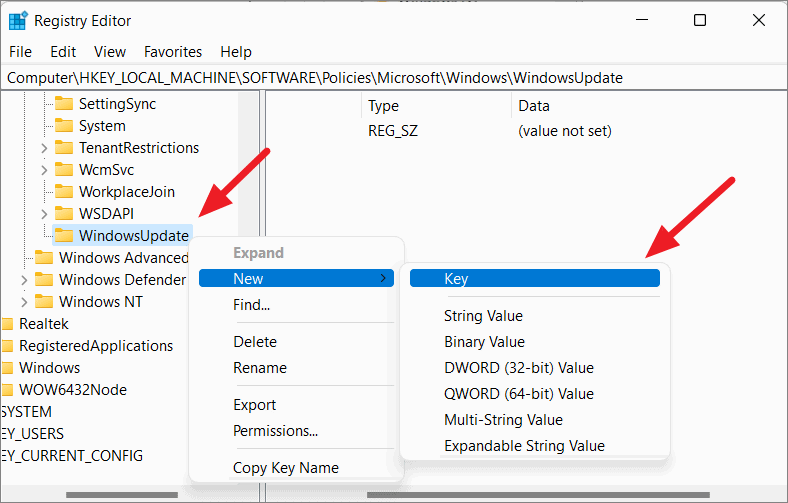
Step 5: Select the AU key. In the right pane, right-click on an empty space and select New > DWORD (32-bit) Value. Name this new value NoAutoUpdate.

Step 6: Double-click on NoAutoUpdate and set its value data to 1. Click OK to save the changes.
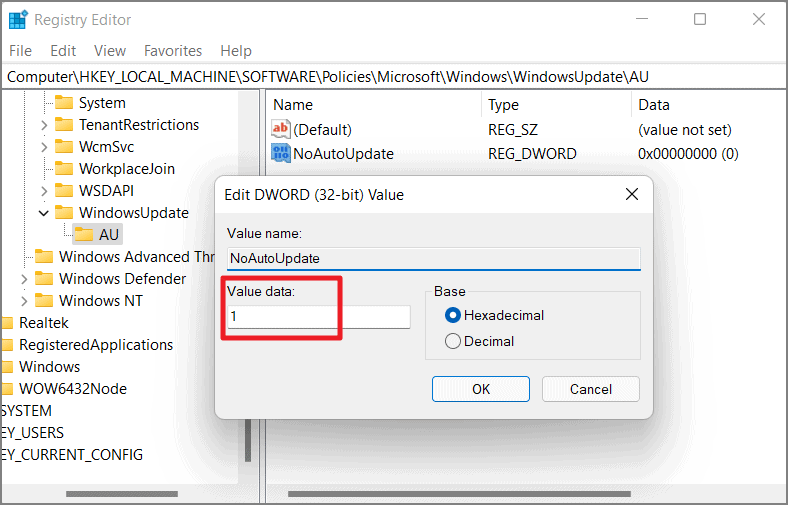
Step 7: Close the Registry Editor and restart your computer for the changes to take effect. Automatic updates will now be disabled on your system.
If you wish to re-enable automatic updates in the future, you can delete the NoAutoUpdate value or change its value data to 0.
Customize Windows Update Settings via Registry Editor
If you prefer to have more control over how updates are installed rather than completely disabling them, you can customize the update settings through the Registry Editor.
Step 1: Navigate to:
HKEY_LOCAL_MACHINE\SOFTWARE\Policies\Microsoft\Windows\WindowsUpdate\AUIf the WindowsUpdate and AU keys do not exist, create them as described in the previous steps.
Step 2: In the AU key, create a new DWORD (32-bit) Value named AUOptions.
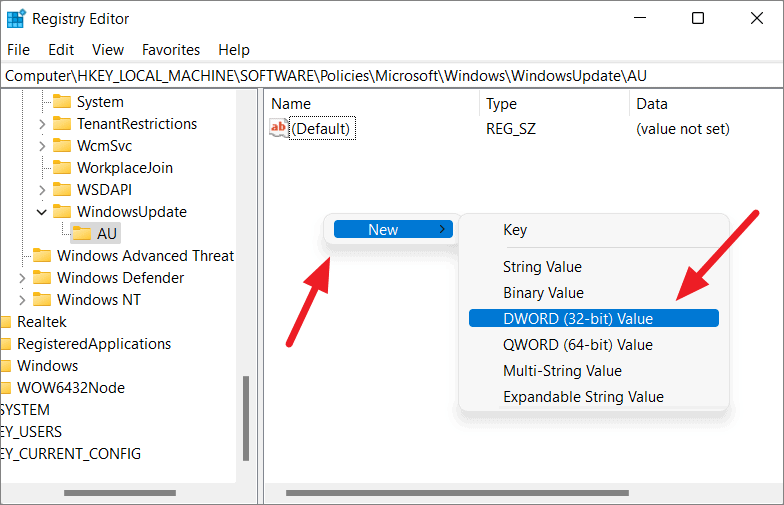
Step 3: Double-click on AUOptions and enter one of the following values in the value data field to set your preferred update option:
2– Notify before downloading and installing updates.3– Automatically download updates and notify when they are ready to install.4– Automatically download updates and schedule the installation.5– Allow the local administrator to choose the settings.7– Notify for download, notify for install.
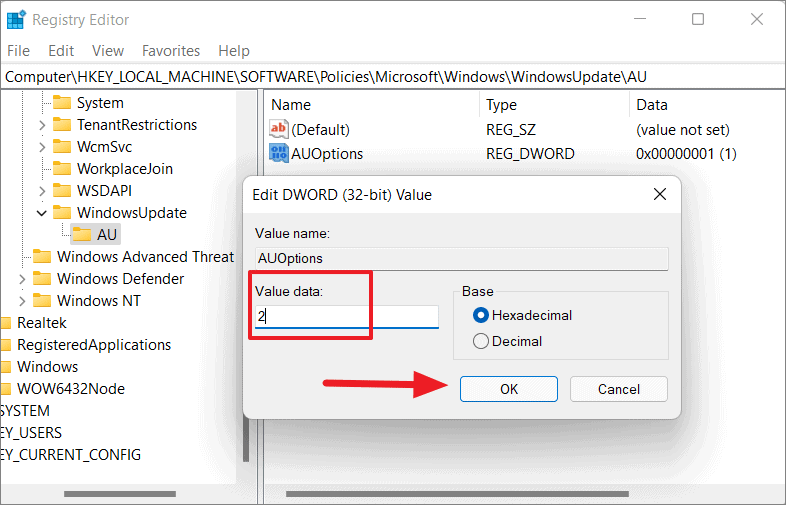
Step 4: Click OK, close the Registry Editor, and restart your computer to apply the changes.
Disable Automatic Updates using Group Policy Editor
For users of Windows 11 Pro, Enterprise, or Education editions, the Group Policy Editor offers a straightforward way to manage automatic updates.
Step 1: Open the Run dialog by pressing Win + R, type gpedit.msc, and press Enter to launch the Local Group Policy Editor.

Step 2: In the left pane, navigate to:
Computer Configuration > Administrative Templates > Windows Components > Windows Update > Manage end user experience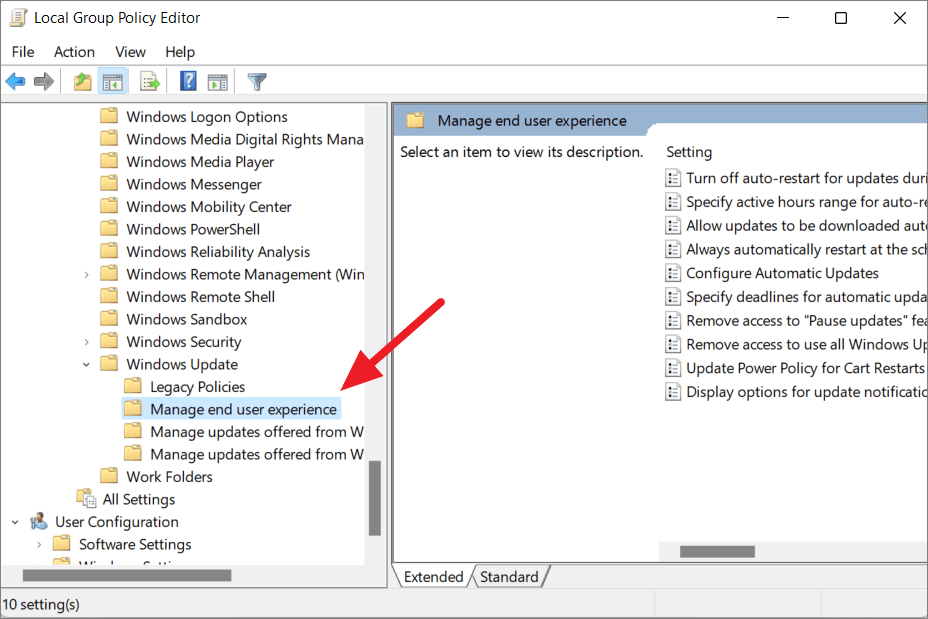
Step 3: In the right pane, double-click on Configure Automatic Updates.

Step 4: Select the Disabled option. Click Apply and then OK to save the changes.

This will turn off automatic updates on your system. To re-enable them, revisit this setting and select Not Configured or Enabled.
Customize Update Settings via Group Policy Editor
If you want to modify how updates are handled rather than disabling them completely, you can adjust the settings in the Group Policy Editor.
Step 1: Open the Configure Automatic Updates policy as described previously, and select Enabled.
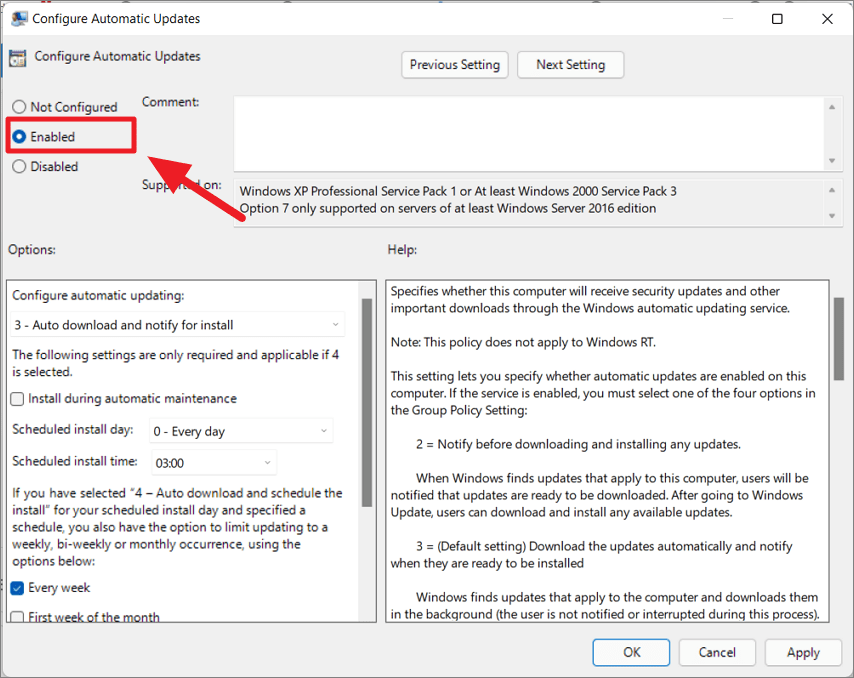
Step 2: Under the Options section, choose one of the following from the Configure automatic updating dropdown menu:
- 2 - Notify for download and auto install
- 3 - Auto download and notify for install
- 4 - Auto download and schedule the install
- 5 - Allow local admin to choose setting
- 7 - Auto Download, Notify to install, Notify to Restart
Step 3: After selecting your preferred option, click Apply and then OK. Restart your computer to implement the changes.
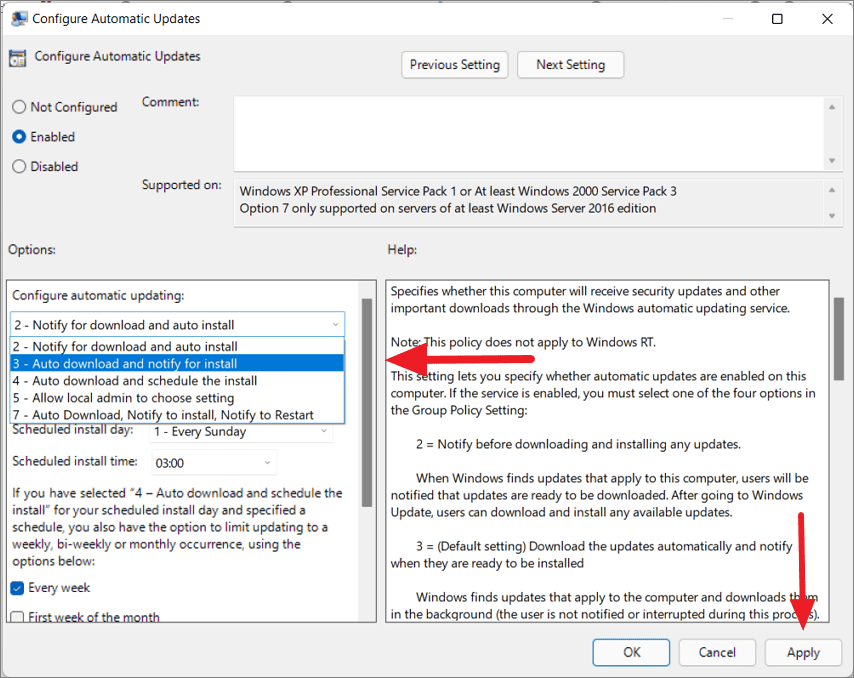
Stop Windows 11 Updates via Windows Update Service
Another method to prevent Windows from updating is by disabling the Windows Update service entirely.
Step 1: Press the Start button and type Services. Click on the Services app from the search results.
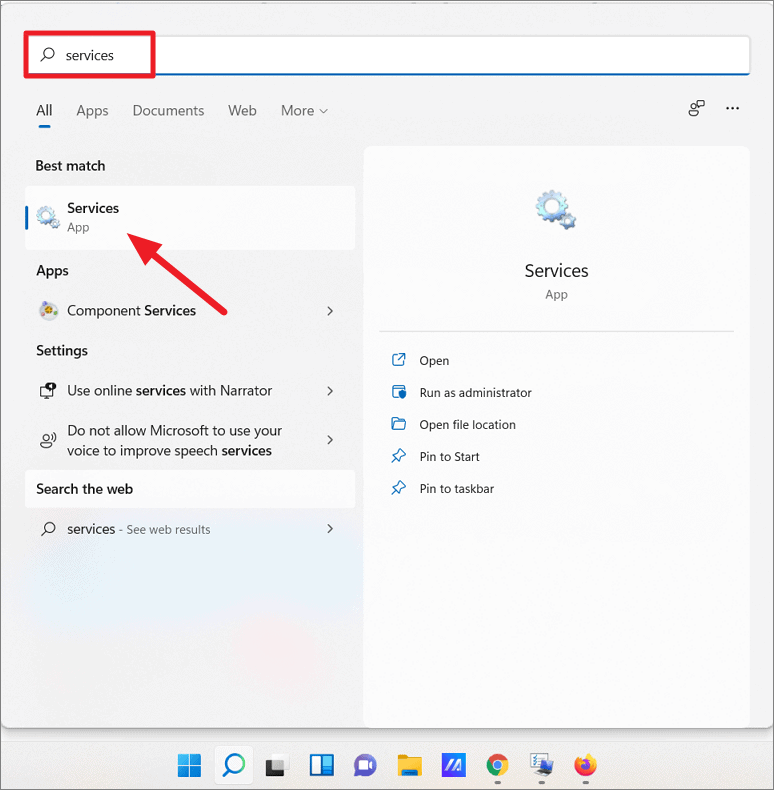
Step 2: In the Services window, scroll down to find Windows Update. Double-click on it to open its properties.

Step 3: Click on the Stop button under Service status to halt the service.
Step 4: In the Startup type dropdown menu, select Disabled. Click Apply and then OK to save the changes.
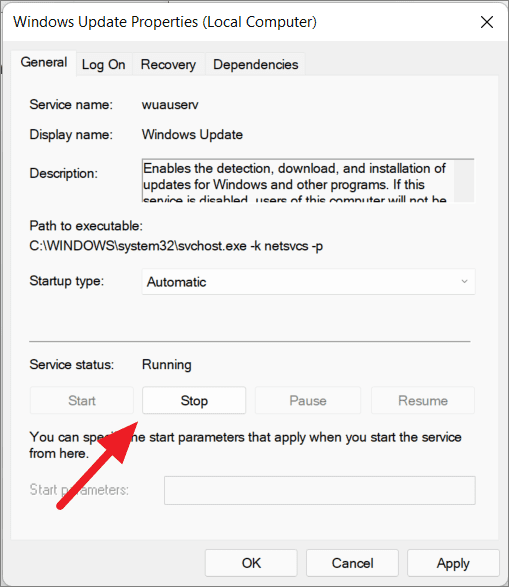
This will prevent Windows Update from running on your system. To re-enable updates, return to this window, change the Startup type to Manual or Automatic, and start the service.
Set a Metered Connection to Stop Windows Updates
Configuring your network connection as metered can restrict Windows from downloading updates automatically.
Step 1: Open Settings by pressing Win + I. Select Network & Internet from the left pane, then click on Wi-Fi.
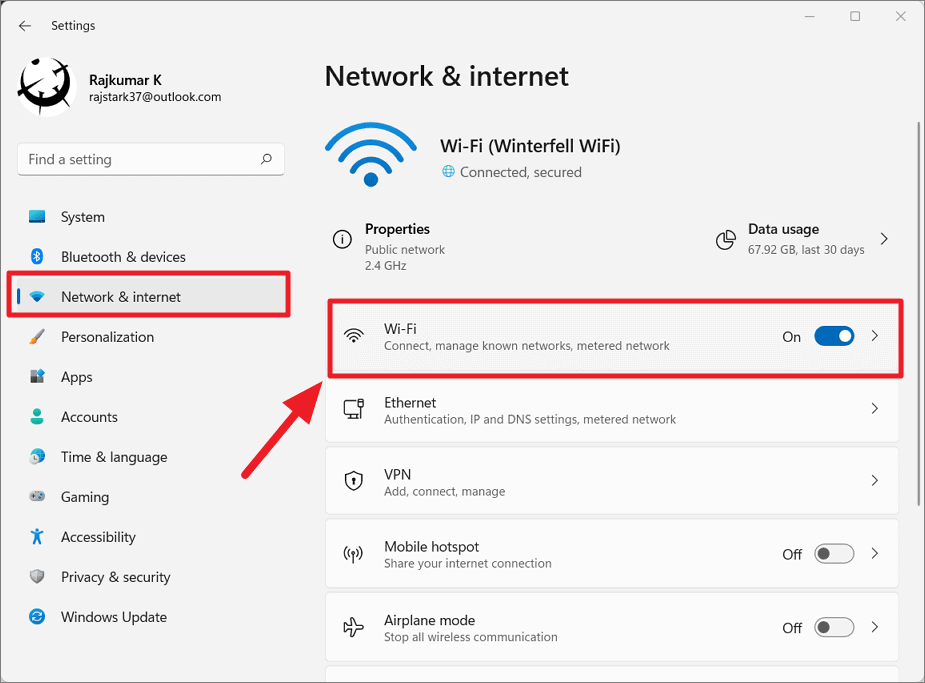
Step 2: Click on your connected Wi-Fi network to access its properties.
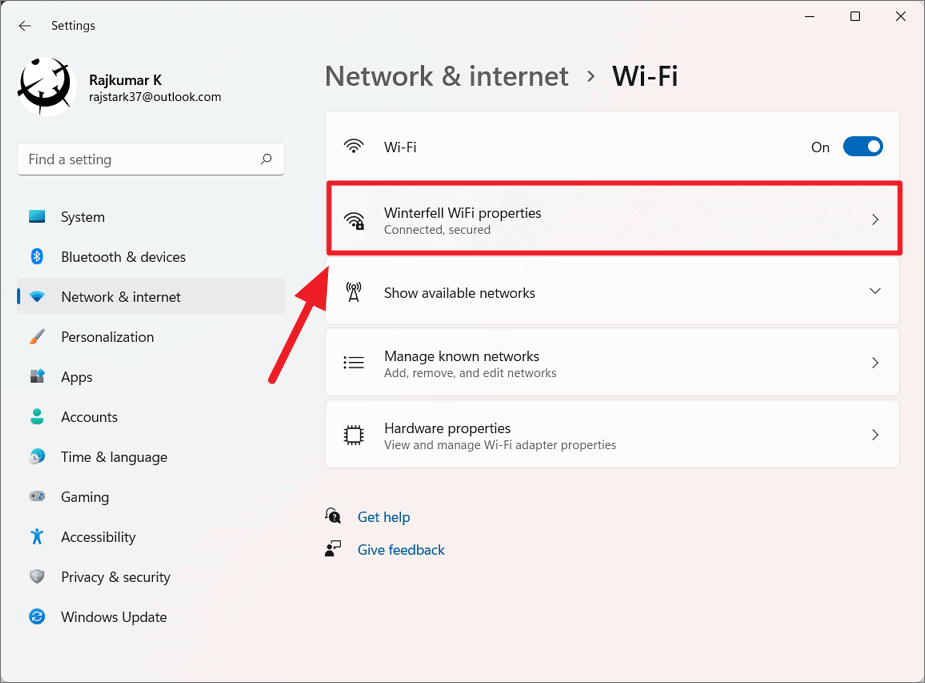
Step 3: Scroll down to find the Metered connection option. Toggle the switch to On to set the connection as metered.

Step 4: Return to the main Settings window and select Windows Update.
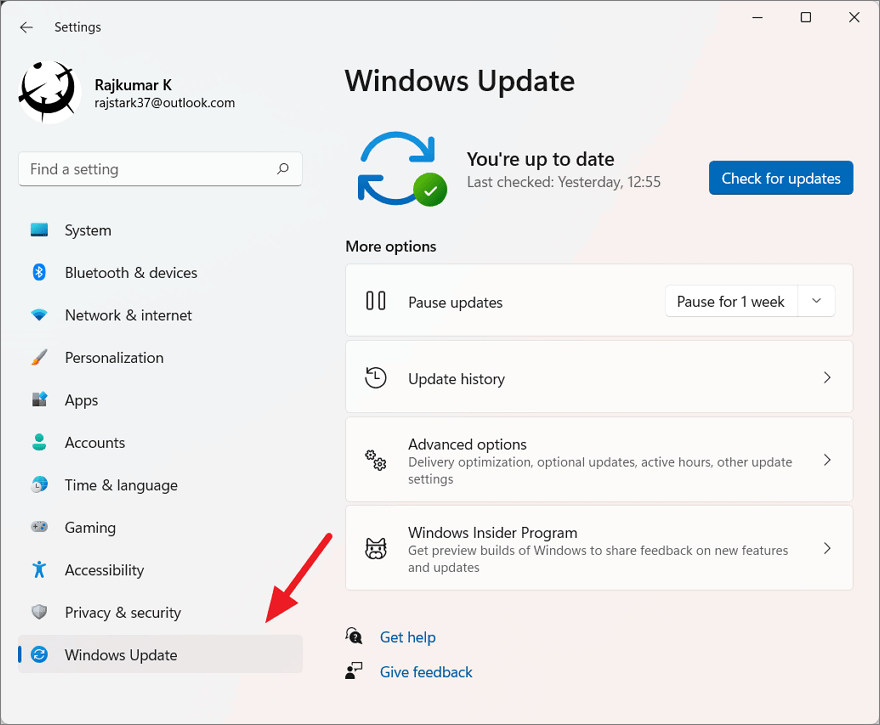
Step 5: Click on Advanced options.

Step 6: Ensure that the Download updates over metered connections option is toggled Off.
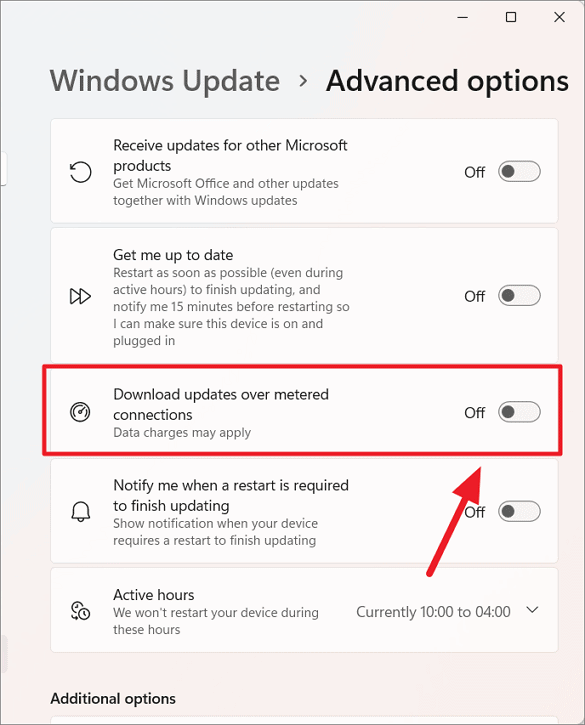
With these settings, Windows Update will not automatically download updates over your metered connection. You can manually check for updates and download them when desired. Note that critical security updates might still be downloaded automatically.
Pause Updates via Windows Update Settings
If you want to temporarily stop updates, you can pause them through the Windows Update settings.
Step 1: Open Settings by clicking the Start menu and selecting the gear icon or by pressing Win + I. Then, click on Windows Update in the left pane.
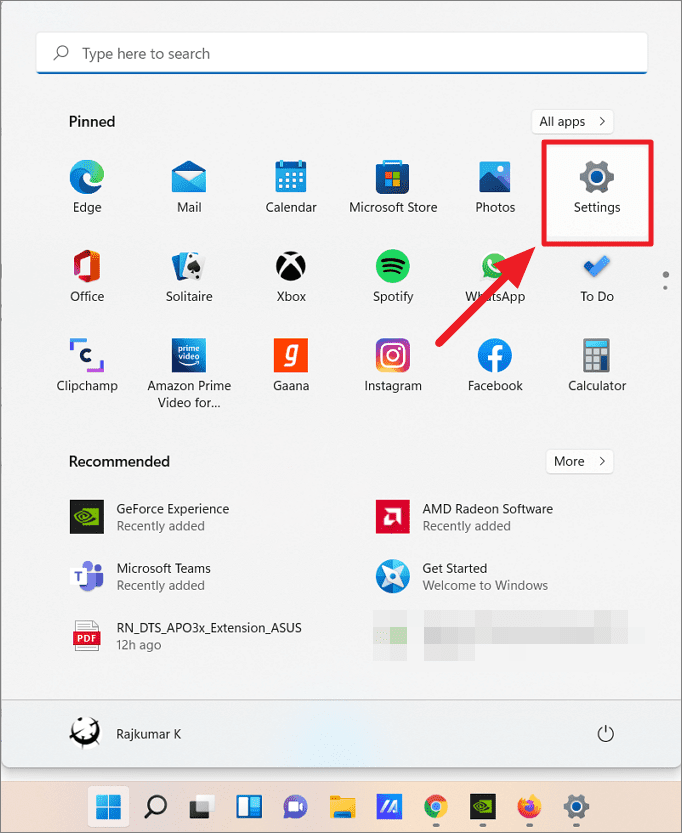
Step 2: Under the More options section, click on the Pause for 1 week button to suspend updates for seven days.

Step 3: If you wish to extend the pause period, click on Extend for 1 week. You can extend the pause up to a maximum of 35 days.

Step 4: To select a specific pause duration, click the dropdown arrow next to the pause button and choose a period ranging from 1 to 5 weeks.

Step 5: To resume updates at any time, click the Resume updates button at the top of the Windows Update settings page.
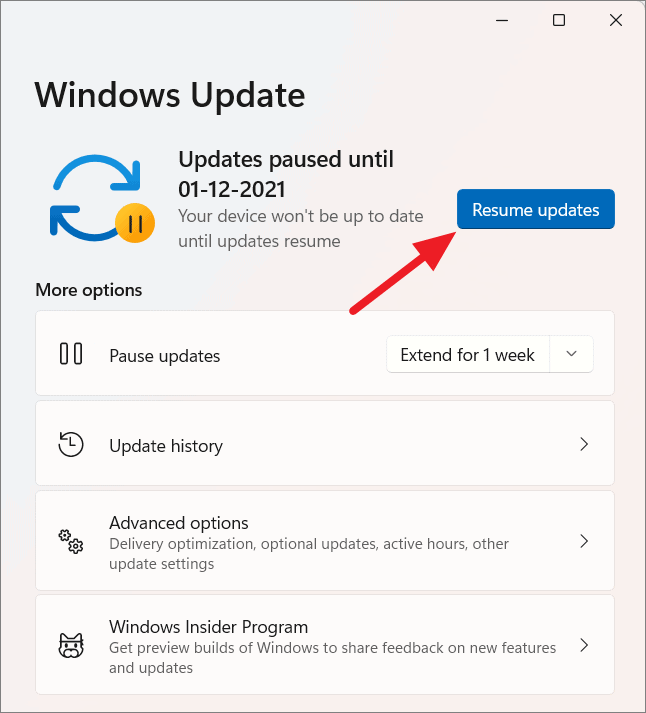
This method is useful for delaying updates temporarily. After the pause period expires, Windows will automatically check for and install available updates.
Uninstall Updates on Windows 11
If you encounter issues after an update, you can uninstall it to revert to a previous state.
Step 1: Open Settings by pressing Win + I and select Windows Update from the left pane.
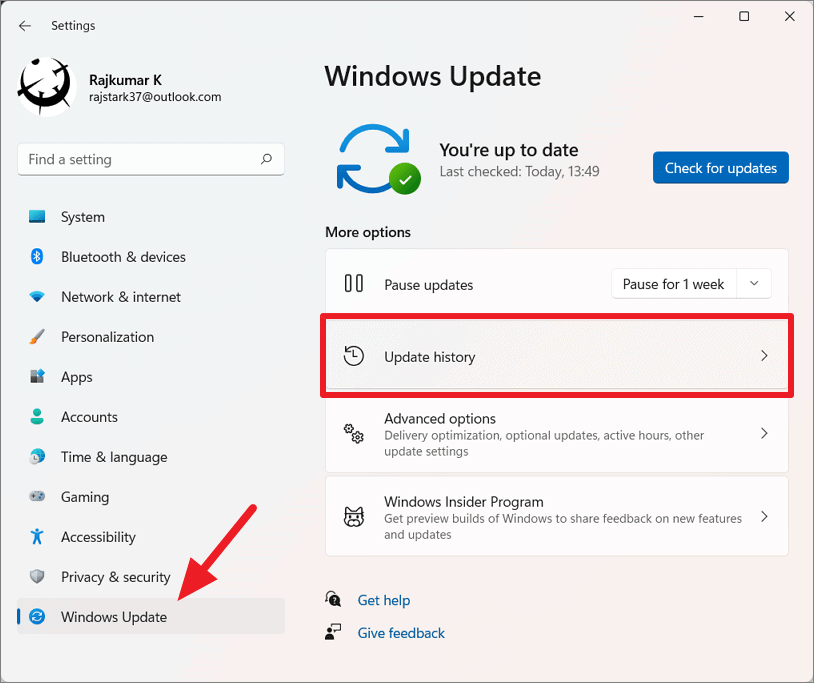
Step 2: Click on Update history to view all installed updates.
Step 3: Scroll down and click on Uninstall updates under the Related settings section.

Step 4: In the Installed Updates window, select the problematic update and click on Uninstall.

Follow the on-screen instructions to complete the uninstallation. Your system may require a restart to finalize the process.
Stop Windows 11 Auto-Updates with Third-Party Tools
If you prefer a simpler solution to manage updates, third-party tools can help you disable automatic updates without delving into system settings.
Some popular free utilities include:
Using Windows Update Blocker:
Step 1: Download Windows Update Blocker from the official website. Scroll to the bottom of the page and click the Download button.
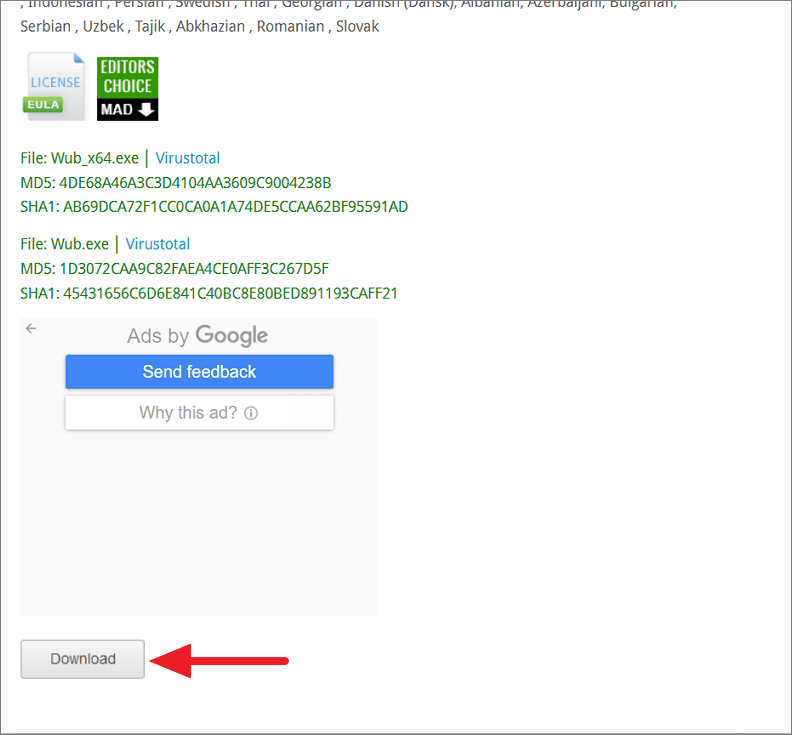
Step 2: Extract the downloaded ZIP file and run Wub_x64.exe for 64-bit systems or Wub.exe for 32-bit systems.
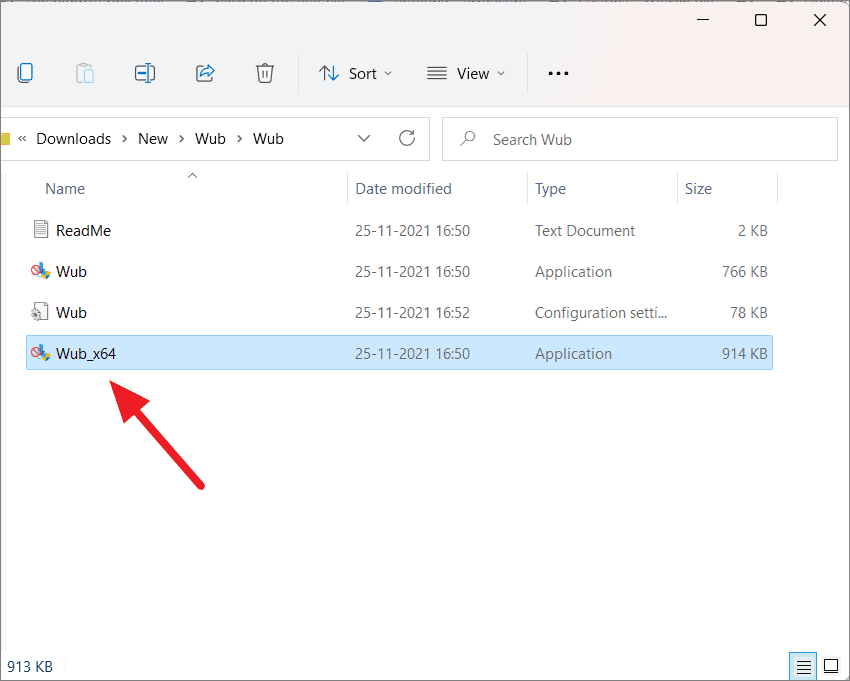
Step 3: In the program window, select Disable Updates and check the Protect Services Settings option. Click Apply Now to disable automatic updates.
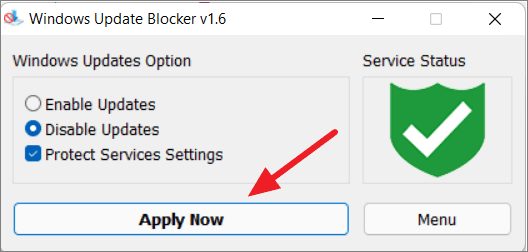
Step 4: Restart your computer to apply the changes. To re-enable updates, run the tool again, select Enable Updates, and click Apply Now.
Managing automatic updates in Windows 11 allows you to have greater control over your system. Whether you choose to disable updates permanently or pause them temporarily, these methods provide flexibility to ensure updates occur on your schedule.

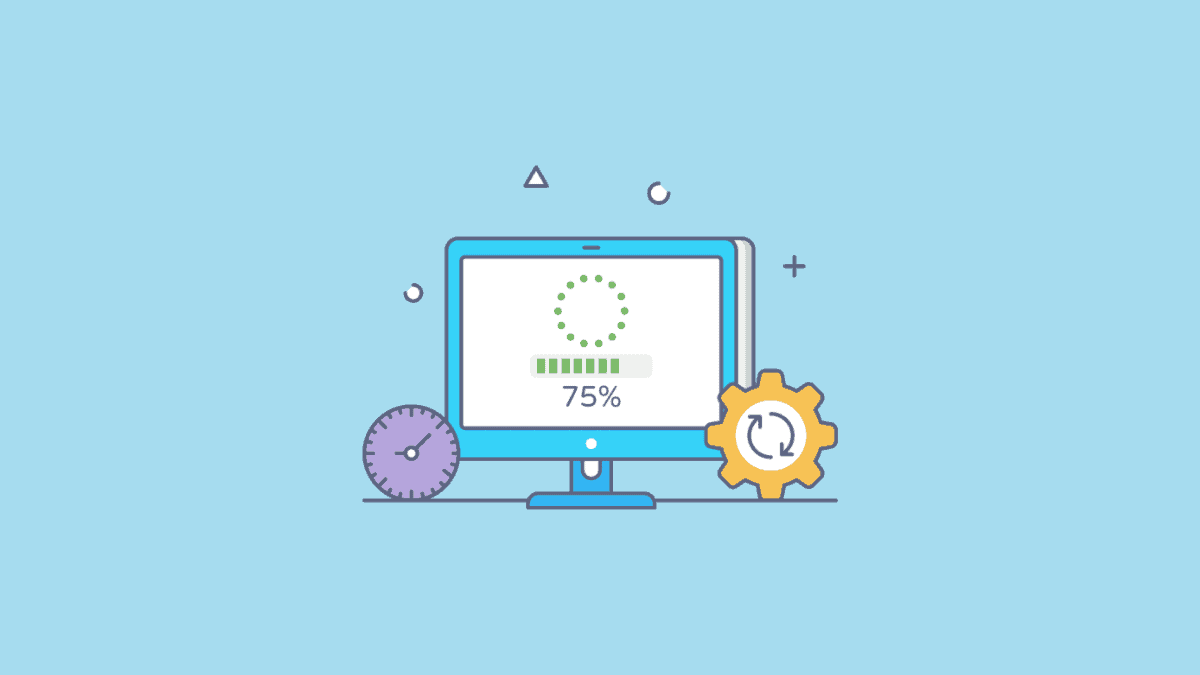




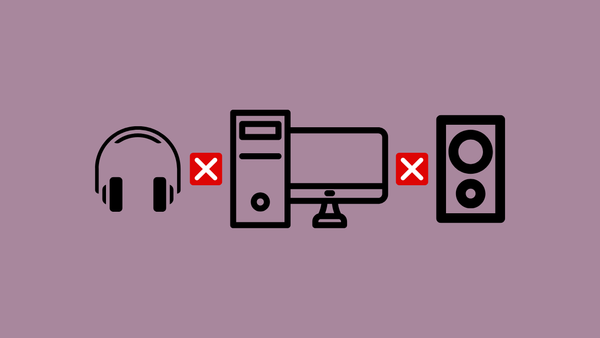

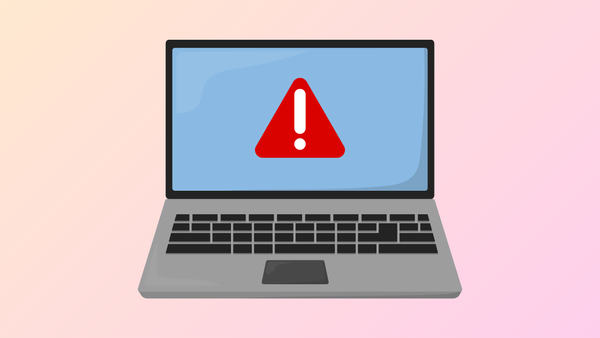

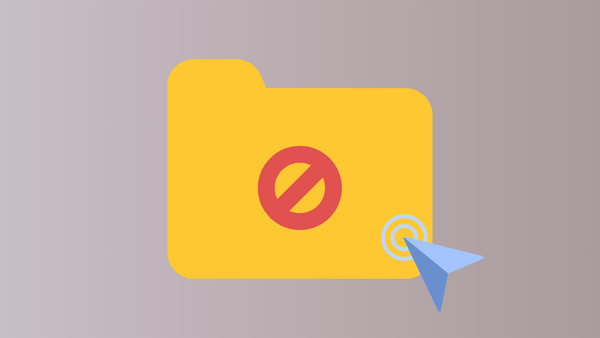
Member discussion